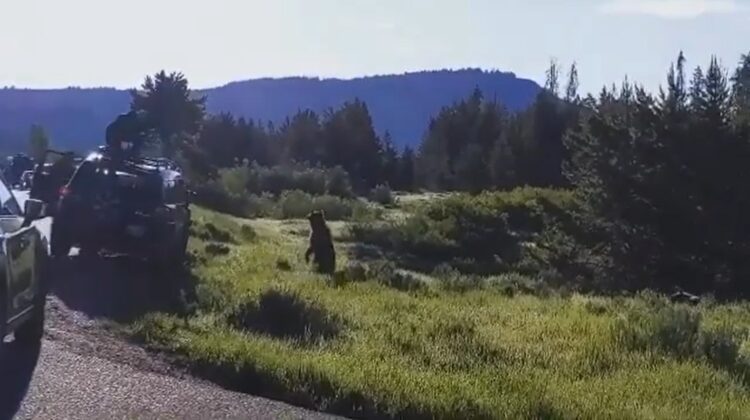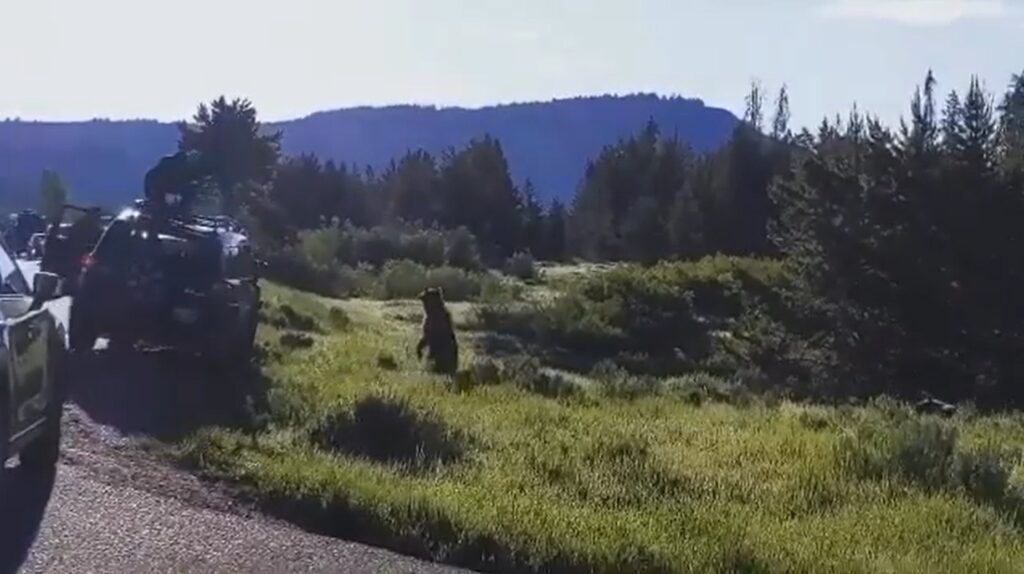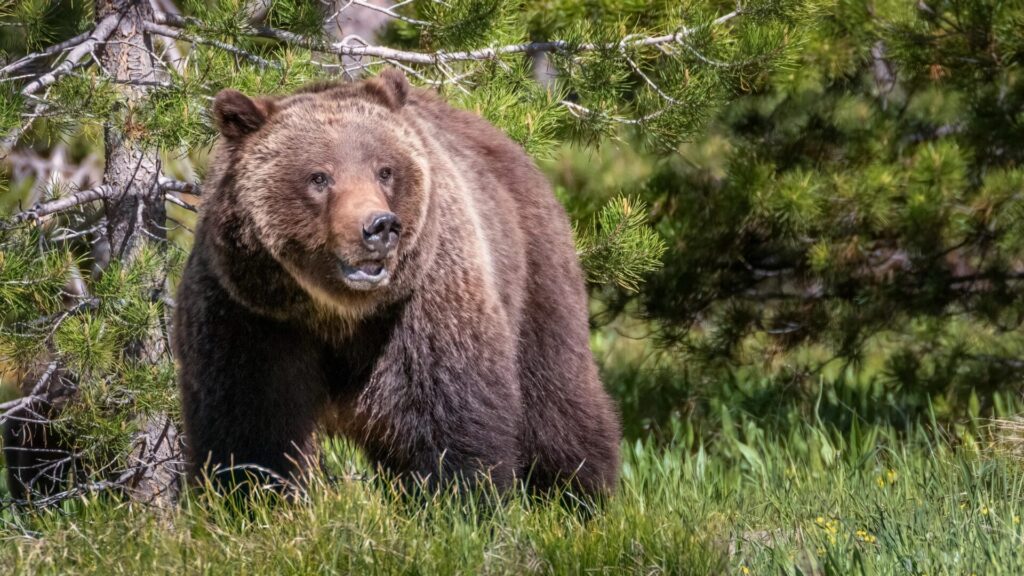
Grand Teton National Park witnessed a heart-pounding episode as two tourists attempted to capture close-up photos of a grizzly bear and her cub, only to find themselves in a perilous situation. Grizzly bears, known for their remarkable speed of up to 35mph, proved to be formidable adversaries when the tourists unintentionally provoked the protective mother.
Captured on video by another visitor, the footage reveals the ill-fated moment when the two individuals stood outside their vehicle to photograph the bears at the roadside. The sow, understandably agitated by their presence, took swift action and charged at the intruders. In a desperate bid for safety, one man hurriedly sought refuge inside their car, while the other resorted to climbing onto the vehicle’s roof.

While the daring escape may have seemed effective, the reality remains that, given the bear’s agility, reaching the man on the roof would have been well within its capabilities. Grizzlies, though not as renowned as black bears for climbing, are, in fact, adept climbers, as noted by the National Park Service (NPS).
Fortunately, the sow eventually appeared satisfied with her display of dominance. After dealing with the two intruders, she reared up to get a better view and, remarkably, chased yet another tourist back into their vehicle, ensuring a safe distance from her vulnerable cub.
The entire incident, shared via the Instagram account TouronsOfNationalParks, sheds light on the reckless behavior exhibited by individuals in natural beauty spots worldwide. This platform exposes various instances, from taking family photos on the precipice of the Grand Canyon to provoking wildlife such as moose at ski resorts.
Grand Teton National Park, home to both black bears and grizzlies, emphasizes the importance of respecting these majestic creatures and maintaining a safe distance. While bears typically avoid human interaction, they can become aggressive when they perceive a threat to themselves, their young, or their food source.

The NPS provides essential advice on interpreting a bear’s body language to gauge its mood, including signs of agitation such as head swaying, huffing, clacking of teeth, lowered head, and laid-back ears indicating aggression. In the event of a bear charge, Park Rangers advise against running, as bears may often make bluff charges, stopping or veering off at the last moment. The recommended course of action is to wait until the bear stops, then back away slowly, deploying bear spray if necessary.
For comprehensive guidance on bear encounters and wildlife safety, refer to our informative guides on what to do if you meet a bear and eight tips for unexpected wildlife encounters. Stay informed, stay safe, and respect the majestic wildlife that shares our natural habitats.

Leave a Reply